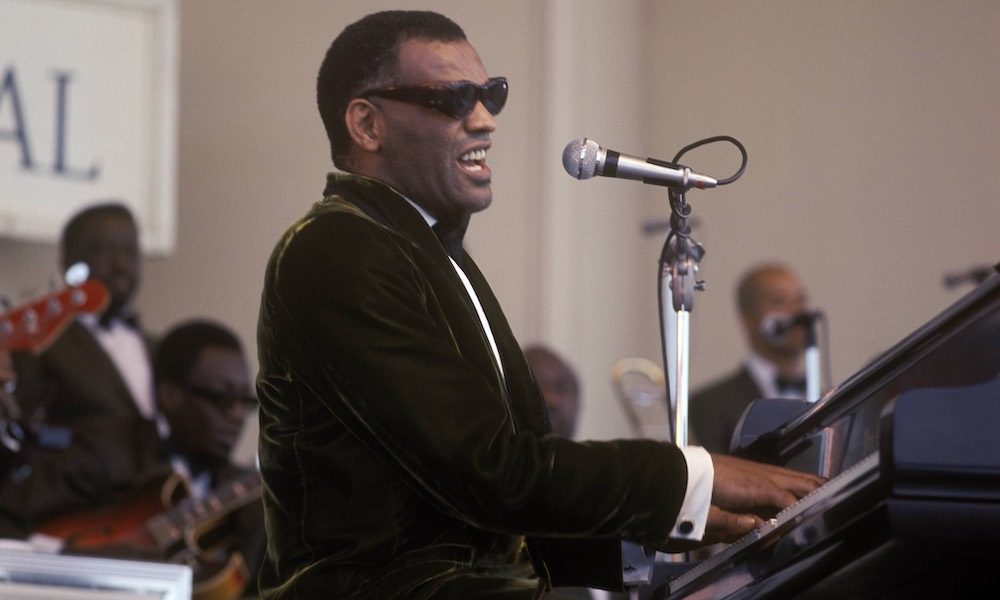Vision Of A Genius: The Legacy Of Brother Ray Charles
A tribute to the man who helped invent modern-day R&B with his deeply soulful, gospel-influenced piano playing and singing.

Today we pay tribute to a musical giant who will certainly never be replaced, and who richly deserved to be known as the Genius. Brother Ray Charles was born on September 23, 1930 in Albany, Georgia.
Partially blind at five and completely sightless at seven, Charles saw music with more clarity than almost any pianist-singer of the 20th century. Indeed, he helped to invent modern-day R&B with his deeply soulful, gospel-influenced piano playing and singing, in a recording career that lasted for five and a half decades.
A worthy biopic
The great success of the 2004 biopic Ray was just one modern-day measure of his influence and reputation in contemporary music. Jamie Foxx won Best Actor at the Oscars for his portrayal of the great man, and the following year, guested on Kanye West’s gigantic US hit “Gold Digger,” which sampled Ray’s “I Got A Woman” and stayed at the top of the Billboard Hot 100 for ten weeks.
Charles’ own first chart appearance came just four years after the end of World War II, when he was part of the Maxin (also known as McSon) Trio. Their “Confession Blues” was a big R&B record in 1949, after which Ray made the chart in his own name for the first time in 1951, on the Swing Time label, with “Baby Let Me Hold Your Hand.”
“I’ve Got A Woman” was his first R&B No.1 in 1955. Ten more would follow, a sequence that spanned a remarkable 34 years and included such unrivalled recordings as “Drown In My Own Tears,” “What’d I Say,” “Hit The Road Jack,” and “I Can’t Stop Loving You,” until he was featured, with Chaka Khan, on Quincy Jones’ “I’ll Be Good To You” in 1989.
It was Charles’ landmark Modern Sounds In Country and Western Music LP in 1962 that changed the game for his career and for the wider musical world. Its inspired genre-crossing scope created a blend of rhythm and blues with country, jazz, pop, and gospel that had never been achieved with such élan. From then on, The Genius spoke to an infinitely wider audience that crossed most of the boundaries that had silently stood in his way, and its influence remains palpable to this day.
Decades later, at the other end of one of the most memorable careers in all music, Charles’ final studio album was Genius Loves Company. The all-star collaborative project was released in August 2004, two months after his death at the age of 73. It featured duets with many of the artists that he had influenced over the decades, from James Taylor to Johnny Mathis and from Natalie Cole to Norah Jones.
That December, it was announced that the record had gained a dizzying ten Grammy nominations. It went on to win eight, including a Record of the Year honor for the track featuring Jones, “Here We Go Again.”
‘There’s something for everyone to do’
In 1963, just ahead of his first British tour, Ray responded to the nickname he had by saying: “Genius? That’s nothing to be ashamed of. But it gives you a sense of responsibility. I’m just an example of the fact that there’s something for everyone to do if they just want to do it.
“They call my singing ‘emotional’ and ‘full of feeling,’ but that’s how the songs are to me. I try to get the feel of a song and the emotion in it, before I record it. It’s got to move me. If I don’t feel anything from the song, then I forget it. I don’t record it.” Hallelujah, we love him so.
Listen to the best of Ray Charles on Apple Music and Spotify.













Bob Breitman
September 24, 2015 at 9:15 pm
You don’t have to tell me about brother Ray His big its were great but some of the other recordings like Cry the Johnny Ray hit and Lucky Ole Sun are
unbelievable I was at every concert in the New York city area I am sure you
know the country album MODERN SOUNDS IN COUNTRY MUSIC was the reason for the great rise in country music